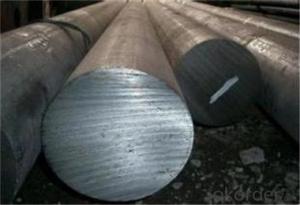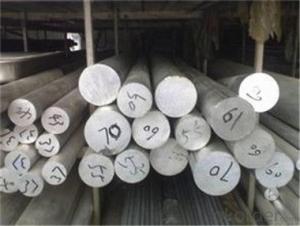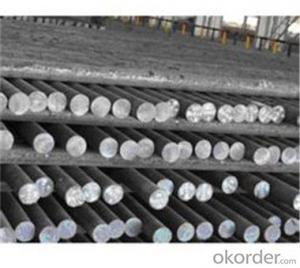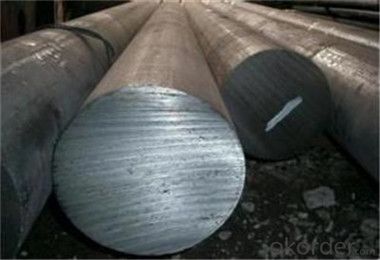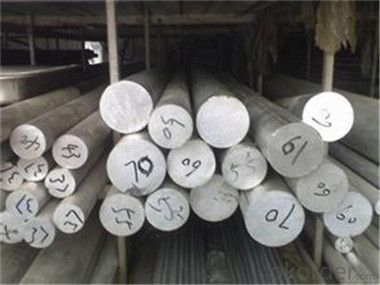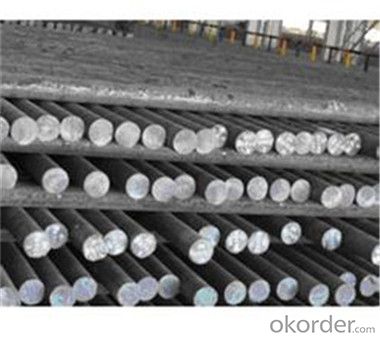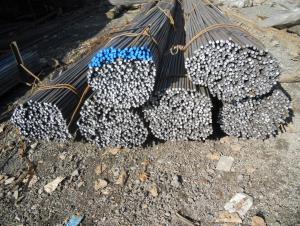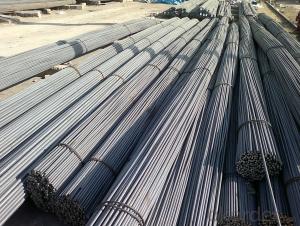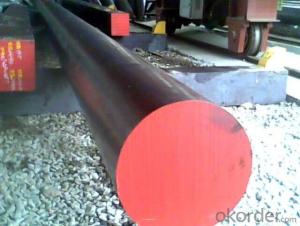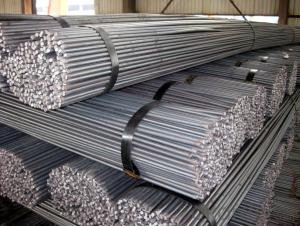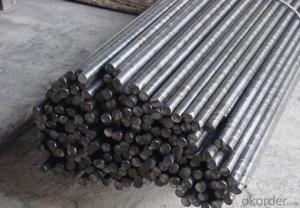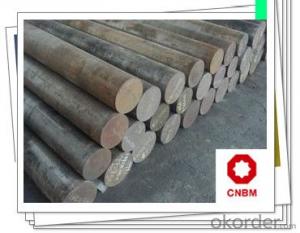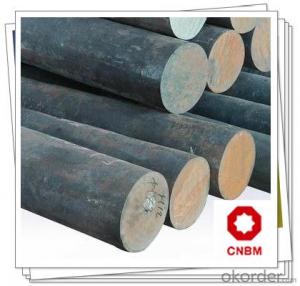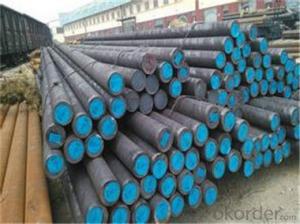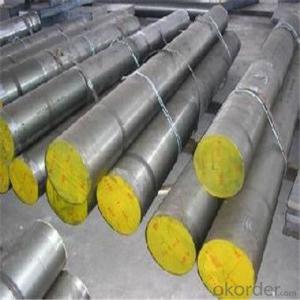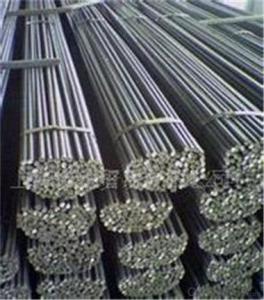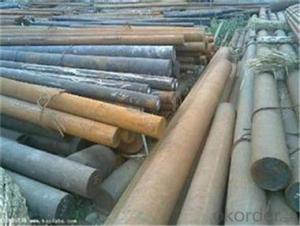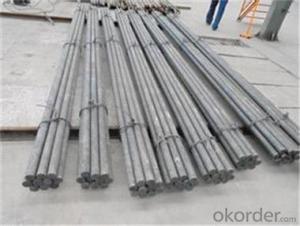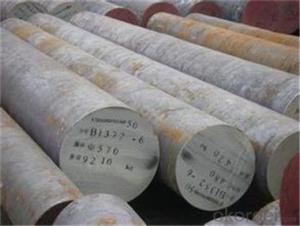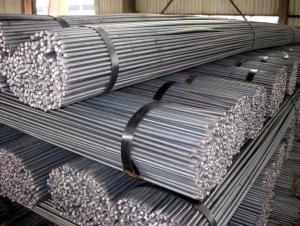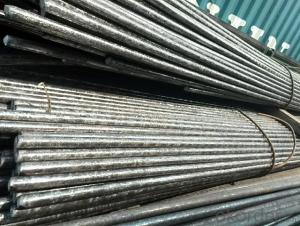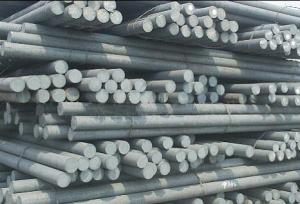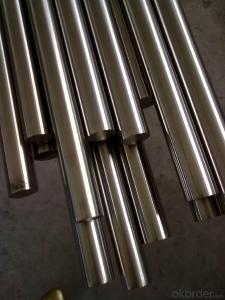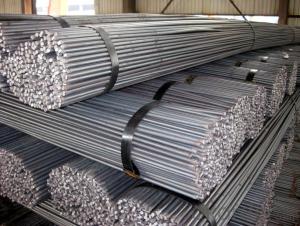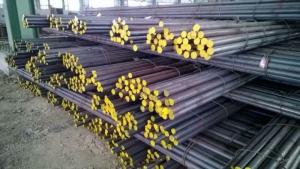HSS Steel Round Bar/High Alloy Round Tool Steel Bar
- Loading Port:
- Tianjin
- Payment Terms:
- TT OR LC
- Min Order Qty:
- 88 m.t.
- Supply Capability:
- 2000000 m.t./month
OKorder Service Pledge
OKorder Financial Service
You Might Also Like
Specification
Description of steel round bar:
Diameter:20mm-80(85)mm(rolled round steel),90-350(400)mm(forged round steel)
Length: optional
Quality High Carbon Steel Round Bar
Garde:20CrMo30 CrMo 35CrMo 42CrMo
Dia:18-230mm
Standard GB,JIS,ASTM,DIN,AISI,BS
Festures of steel round bar:
Cr shaper cutter, milling cutter,screw tap,drill bit etc.Also can be used in manufacture of large scale and thermoplasticity shaped cutting tools and antiabrasive cutting tools under high load
Specifications of steel round bar:
1.Forged round bars: (Diameter) 14mm ~ 500mm ,Length:2000mm-6000mm
2.Forged plates: (Thickness)15~400mm x (Width)50~1500mm ,Length:2000mm-6000mm
3.Square bars: As customers’ requirements.Forged section: round ,square, flats/blocks
Plate,Other grades and profiles on request.Condition finished goods hot forged/hot rolled + annealed/normalized + tempered/quenched + tempered/any conditions based on your requirements.
Images of steel round bar:
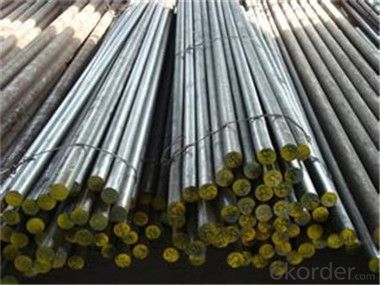
FAQ:
1. What is your package?
Packing situation: standard seaworthy packing or as customer required.
2. How long is the lead time?
Delivery time: 45 days after order confirmed.
3. What payment term do you accept?
Payment: T/T or L/C at sight.
- Q: What are the different packaging options for steel round bars?
- The different packaging options for steel round bars usually include bundles, wooden crates, or steel frames.
- Q: What are the advantages of using steel round bars?
- Using steel round bars in various applications has several benefits. First and foremost, steel round bars are renowned for their exceptional strength and durability, making them perfect for construction projects as they can withstand heavy loads and provide structural integrity. Moreover, steel round bars exhibit excellent resistance to corrosion, making them suitable for outdoor and marine applications. They can endure harsh weather conditions and remain unaffected by moisture and chemicals, resulting in a longer lifespan and reduced maintenance costs. In terms of versatility, steel round bars offer a wide range of customization options, allowing them to be tailored to specific requirements. This makes them suitable for construction, manufacturing, and engineering projects where precise dimensions and specifications are crucial. Additionally, steel round bars have excellent machinability, making them easy to cut, drill, and shape. This adaptability saves time and effort during the fabrication process, making them highly convenient to work with. Moreover, steel round bars possess a high tensile strength, enabling them to resist deformation under pressure. This makes them an ideal choice for applications that require exceptional strength, such as in the manufacturing of machinery, tools, and automotive components. Lastly, steel round bars are cost-effective compared to other materials. Their durability and long lifespan result in reduced maintenance and replacement costs over time. Furthermore, their availability and widespread use make them a cost-efficient option for various industries. Overall, the advantages of using steel round bars include their exceptional strength, resistance to corrosion, versatility, machinability, high tensile strength, and cost-effectiveness. These qualities contribute to their widespread usage in industries worldwide.
- Q: Can steel round bars be used in the production of shafts?
- Shafts can indeed be produced using steel round bars. The manufacturing process of shafts often involves utilizing steel round bars as a raw material due to their remarkable attributes of strength, durability, and versatility. These bars can be machined or forged into the precise shape and size required for the shaft. With their inherent properties, they are well-suited for a wide range of applications, including the automotive, machinery, and construction industries. Steel round bars boast exceptional mechanical properties such as high tensile strength, impressive impact resistance, and resistance to corrosion. Consequently, they are an ideal choice for shafts that necessitate both a high load-bearing capacity and reliability. Additionally, steel round bars can undergo heat treatment to further enhance their strength and hardness, thereby ensuring optimal performance and longevity of the shafts under diverse operating conditions.
- Q: What are the different tolerances for steel round bars?
- There are various tolerances for steel round bars, depending on the specific requirements and standards set by different industries and applications. These tolerances ensure that the dimensions and surface conditions of the steel round bars meet the desired specifications. The most common tolerance for steel round bars is the diameter tolerance. This refers to the allowable deviation from the specified diameter. For example, a steel round bar with a diameter tolerance of +/- 0.005 inches means that the actual diameter of the bar can vary within this range. Another important tolerance for steel round bars is the straightness tolerance. This refers to the allowable deviation from a straight line over a specified length of the bar. Straightness tolerances are usually given in terms of the maximum deviation in relation to the length, such as 0.010 inches per foot. Surface finish tolerance is also crucial for steel round bars. It refers to the acceptable variation in the surface texture or roughness of the bar. This tolerance is often specified using parameters such as Ra (average roughness) or Rz (maximum roughness depth). For example, a surface finish tolerance of Ra 0.8 micrometers means that the average roughness of the bar's surface should not exceed this value. In addition to these common tolerances, there may be other specific tolerances based on the intended application of the steel round bars. These can include tolerances for straightness, length, weight, or other dimensional properties. It is important to note that the tolerances for steel round bars can vary depending on the standards followed by different industries and countries. It is always recommended to refer to the relevant standards or specifications to determine the specific tolerances required for a particular application.
- Q: What are the different specifications for steel round bars?
- The different specifications for steel round bars typically include the diameter, length, and grade of the steel. Other specifications may include the tolerance levels for diameter and length, as well as any specific requirements for surface finish or heat treatment.
- Q: Weight algorithm of round steel
- Round bar is divided into three parts: hot rolling, forging and cold drawing. Standard Specification for hot rolled round steel is 5.5-250 mm. Where: 5.5-25 mm small round steel mostly straight bundles of supply, used for steel, bolts and various mechanical parts; greater than 25 mm round steel, seamless steel pipe is mainly used for the manufacture of mechanical parts of the tube, etc..
- Q: 20# difference between round bar and A3 round bar, can they be used separately?
- The former belongs to low carbon steel, and the latter belongs to iron.The mechanical properties of the two are completely different, and they can not be interchanged if they are technically required
- Q: What is the difference between steel and flat steel, round steel and steel?
- In fact, for the processing of raw materials are the same, is used when the roller rolling pressure is not the same, there are many different types of tooth roller shaft, can produce different steel, the steel section is square, round cross section is round
- Q: Can steel round bars be used in the automotive manufacturing industry?
- Yes, steel round bars can be used in the automotive manufacturing industry. Steel is a commonly used material in the automotive industry due to its strength, durability, and versatility. Steel round bars can be used for various applications in automotive manufacturing, such as in the construction of chassis, suspension components, drive shafts, and axles. These round bars provide excellent resistance to impact and fatigue, making them suitable for withstanding the rigorous demands of the automotive industry. Additionally, steel round bars can be easily machined and formed into different shapes, allowing for customization and precise engineering in automotive manufacturing processes. Therefore, steel round bars are a reliable and widely used material in the automotive manufacturing industry.
- Q: Are more bars used in high-rise buildings?
- To see what kind of structure, frame structure, screw steel is much more used, such as beam column, main reinforcement, partial stirrups, plate reinforcement. The shear wall structure is used in many round bars, such as vertical wall bars, horizontal bars, steel bars and stirrups. Note that only general structures are concerned.
Send your message to us
HSS Steel Round Bar/High Alloy Round Tool Steel Bar
- Loading Port:
- Tianjin
- Payment Terms:
- TT OR LC
- Min Order Qty:
- 88 m.t.
- Supply Capability:
- 2000000 m.t./month
OKorder Service Pledge
OKorder Financial Service
Similar products
Hot products
Hot Searches
Related keywords
